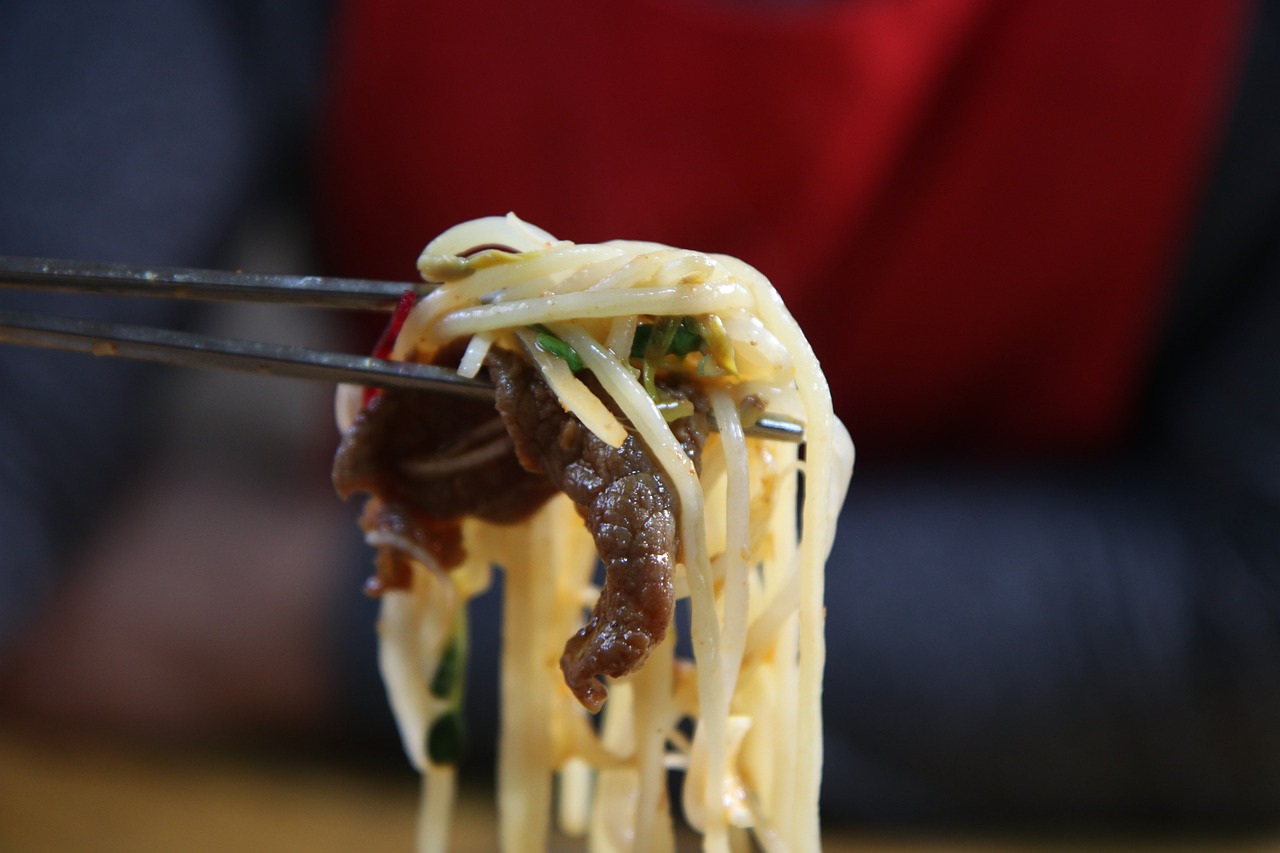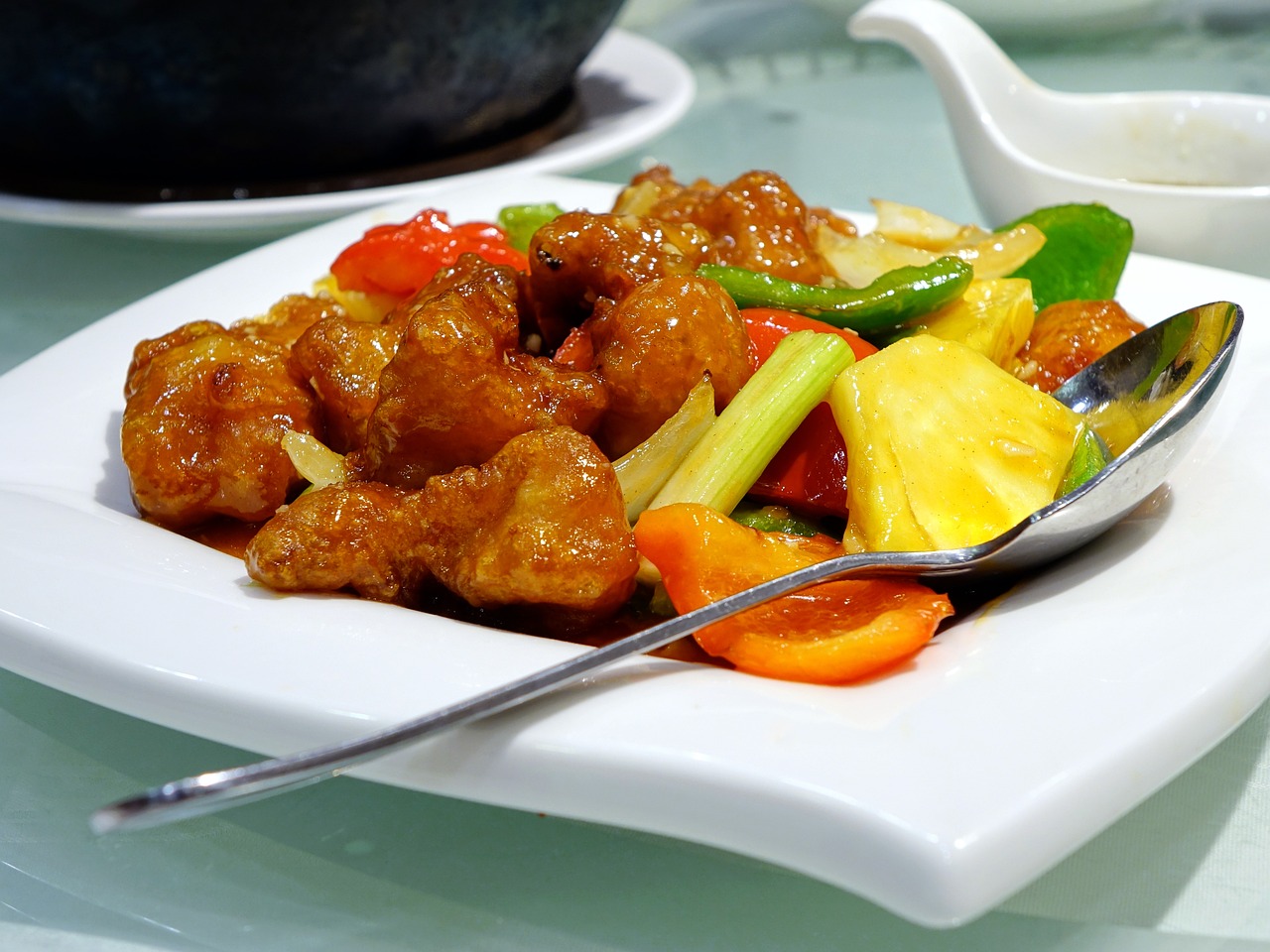Sweet and Sour Pork: Tangy and Delicious Chinese Dish

When it comes to Chinese cuisine, one dish stands out for its irresistible combination of flavors - Sweet and Sour Pork. This iconic dish is a true delight for the taste buds, offering a perfect balance of tangy and sweet notes that dance on your palate. Originating from China, sweet and sour pork has made its way into the hearts of food lovers worldwide, becoming a staple in Chinese restaurants everywhere.
What makes sweet and sour pork so special is not just its delicious taste but also its rich history. Dating back to ancient Chinese culinary traditions, this dish has evolved over the years, adapting to different regional palates and preferences. Today, it remains a beloved classic that continues to surprise and delight diners with its explosion of flavors.
At the heart of sweet and sour pork are the key ingredients that give it its distinctive taste. From succulent pieces of pork to a luscious sweet and tangy sauce, every component plays a crucial role in creating the perfect harmony of flavors. The preparation methods, passed down through generations, ensure that each bite is a culinary experience like no other.
For those looking to explore beyond the traditional recipe, there are numerous variations of sweet and sour pork to tantalize your taste buds. Whether you prefer a vegetarian twist or a modern interpretation with a creative flair, there is a version of this dish to suit every palate. Each variation offers a unique take on the classic, adding depth and complexity to the dish.
When it comes to serving sweet and sour pork, presentation is key. Pairing this dish with the right side dishes and beverages can elevate the dining experience to new heights. Whether you opt for steamed rice or crispy noodles on the side, or choose a refreshing drink to complement the tangy flavors, the possibilities are endless. The art of pairing enhances the overall enjoyment of the meal, creating a memorable culinary experience.
History of Sweet and Sour Pork
The dates back to ancient China, where the concept of balancing flavors was highly valued in culinary practices. The dish originated in the Guangdong province and was initially created to highlight the contrast between sweet and sour tastes, symbolizing the harmony of yin and yang in Chinese cuisine.
Traditionally, sweet and sour pork was prepared using fresh ingredients such as pork, vinegar, sugar, and soy sauce. The dish was developed as a way to preserve meat by marinating it in a mixture of sweet and tangy flavors, creating a delightful sensory experience for those who indulged in it.
Over time, sweet and sour pork gained popularity beyond China's borders, becoming a staple in Chinese restaurants worldwide. Its unique combination of flavors and textures captured the hearts of food enthusiasts, leading to various interpretations and adaptations of the original recipe.
The evolution of sweet and sour pork mirrors the cultural exchange between China and other countries, with each region adding its own twist to the classic dish. From the addition of pineapples and bell peppers to the use of different meats or even tofu, sweet and sour pork has undergone numerous transformations while retaining its essence.
Today, sweet and sour pork continues to be a favorite choice for those seeking a harmonious blend of flavors. Whether enjoyed as a comforting home-cooked meal or savored in a fine dining setting, this iconic dish remains a testament to the enduring appeal of Chinese culinary traditions.
Ingredients and Preparation
When it comes to creating the delectable dish of sweet and sour pork, the key lies in the selection of ingredients and the meticulous preparation process. The balance of flavors and textures is crucial to achieving that perfect harmony that makes this dish a favorite among Chinese cuisine enthusiasts.
The main ingredients for sweet and sour pork typically include:
- Pork: The star of the dish, pork is usually cut into bite-sized pieces, providing a juicy and tender base for the flavors to meld.
- Bell Peppers: Adding a pop of color and a crisp texture, bell peppers are a common addition to sweet and sour pork.
- Pineapple: The sweetness of pineapple chunks contrasts beautifully with the tangy sauce, creating a delightful flavor combination.
- Onions: Sliced onions bring a subtle sharpness to the dish, enhancing its overall complexity.
For the sauce, a blend of vinegar, sugar, soy sauce, and ketchup forms the signature sweet and sour flavor profile. The sauce is typically thickened with cornstarch to achieve the desired consistency that coats the ingredients evenly.
The preparation of sweet and sour pork involves a series of steps to ensure that each component is cooked to perfection. The pork is usually marinated to infuse it with flavor and tenderness before being coated in batter and deep-fried to a crispy golden brown. The bell peppers, pineapple, and onions are then stir-fried separately to retain their individual textures.
Once all the components are cooked, they are combined in a wok or pan, and the sweet and sour sauce is poured over them. The dish is simmered briefly to allow the flavors to meld together, creating a harmonious blend of sweet, tangy, and savory notes.
Traditionally served hot and fresh, sweet and sour pork is best enjoyed with a steaming bowl of steamed rice or noodles to soak up the flavorful sauce. The colorful presentation of the dish, with vibrant vegetables and succulent pork, adds to its appeal both visually and gastronomically.
Whether prepared in a home kitchen or savored at a Chinese restaurant, sweet and sour pork offers a delightful culinary experience that tantalizes the taste buds with its contrasting flavors and satisfying textures.
Variations of Sweet and Sour Pork
Sweet and sour pork, a beloved Chinese dish, offers a myriad of variations to cater to different tastes and dietary preferences. From traditional recipes to modern twists, the versatility of sweet and sour pork allows for endless culinary creativity. Let's delve into some of the most popular variations:
- Vegetarian Sweet and Sour Pork: For those looking for a meat-free option, this variation substitutes the pork with tofu or a medley of vegetables, maintaining the dish's signature sweet and tangy flavors.
- Spicy Sweet and Sour Pork: Adding a kick of heat to the classic dish, this variation incorporates spicy elements such as chili peppers or hot sauce, balancing the sweetness with a fiery twist.
- Crispy Sweet and Sour Pork: Crispy pork pieces coated in a tangy sauce create a delightful contrast in textures, offering a crunchy alternative to the traditional tender meat version.
- Fruit-infused Sweet and Sour Pork: Experimenting with fruit additions like pineapple, mango, or peaches brings a refreshing and tropical twist to the dish, elevating its flavor profile with fruity notes.
Each variation of sweet and sour pork brings a unique touch to the dining experience, showcasing the dish's adaptability and appeal to a wide range of palates. Whether you prefer a traditional approach or enjoy exploring innovative renditions, there is a sweet and sour pork variation to suit every taste preference.
Serving and Pairing Suggestions
When it comes to serving and pairing sweet and sour pork, there are several key considerations to ensure a delightful dining experience. The tangy and savory flavors of this dish can be enhanced by thoughtful choices in presentation and accompaniments. Let's delve into some suggestions to elevate your sweet and sour pork experience:
- Serving: To showcase the vibrant colors and enticing aroma of sweet and sour pork, consider serving it in a decorative dish or a traditional Chinese serving platter. Garnishing with fresh cilantro or sliced green onions can add a pop of color and freshness to the dish.
- Pairing with Side Dishes: Sweet and sour pork pairs well with steamed white rice, which helps balance the tangy sauce with its neutral flavor. For a more substantial meal, you can also serve it with fried rice or noodles. The combination of crispy pork and fluffy rice creates a satisfying texture contrast.
- Choosing Beverages: When it comes to beverages, consider pairing sweet and sour pork with light and refreshing options. Green tea or jasmine tea can cleanse the palate between bites, while a crisp lager or a light-bodied white wine can complement the dish's flavors without overpowering them.
- Adding Heat: If you enjoy a bit of heat in your dishes, consider serving sweet and sour pork with a side of chili sauce or sliced fresh chilies. The spicy kick can provide a delightful contrast to the sweetness of the sauce, creating a dynamic flavor profile.
By paying attention to these serving and pairing suggestions, you can create a memorable dining experience with sweet and sour pork. Whether you prefer a classic presentation or enjoy experimenting with creative combinations, the versatility of this dish makes it a delightful choice for a flavorful meal.



 HazalVardal
HazalVardal 





